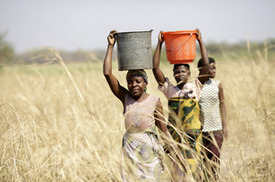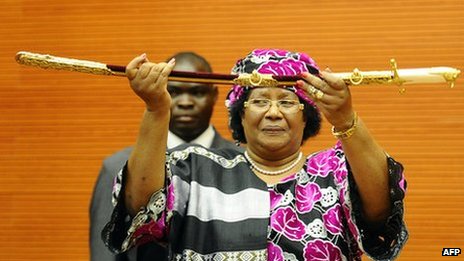Malawi’s poverty levels have come under the microscope with the International Monetary Fund (IMF) indicating that more Malawians could be trapped in poverty than imagined.
Government through the Malawi Growth and Development Strategy (MGDS II) states that the population living below the poverty line went down from 52 percent to 39 percent between 2004 and 2009.
But in the ‘Malawi: Joint Staff Advisory Strategy Note of the Poverty Reduction Strategy Paper’ prepared jointly by the IMF and the International Development Association released on Friday, the experts argue that this trend estimate is actually a poverty projection based on the 2009 Welfare Monitoring Survey and is not directly comparable with the last direct measure of the poverty headcount computed from the 2004/5 Second Integrated Household Survey (IHS2).
“An accurate trend estimate needs to be computed from the 2010/11[Third Integrated Hous ehold Survey] IHS3. Preliminary, unpublished analyses of these data present a bleaker picture, with no major changes in poverty over the 2004/5–2010/11 period.
“These trends will be confirmed and published once the temporal price adjustments needed to compare poverty figures over time have been completed. On inequality, findings indicate that consumption inequality in Malawi (Gini coefficient) has risen sharply from 0.39 to 0.44, mostly in rural areas. These results indicate the need for monitoring not only aggregate growth, but the distribution of its benefits,” reads part of the note.
The authors of the report has since advised Capital Hill that once the analysis of the IHS3 data is complete the authorities need to update the MGDS II with new poverty and social indicators.
“What is clear is that high rates of real GDP growth registered in 2005–10 have not resulted in a sufficient transformation of the economy or the structure of employment. The rise in consumption inequality could explain how average incomes rose in Malawi alongside stagnant living standards for the poor. The strategy will need to be informed by an analysis of how high economic growth could be translated into poverty reduction in the Malawian context.
“The 2009 Country Economic Memorandum identified the main constraints to growth to include an overvalued exchange rate, persistent foreign exchange supply shortages, inadequate provision of power, underdeveloped transport infrastructure, lack of skilled workforce, and limited access to finance. All the recommendations made in the CEM on addressing these constraints still remain relevant to the implementation of the MGDS II. These should be revisited further through a poverty and jobs lens,” reads the note.
Economic Planning and Development Minister Atupele Muluzi could not be reached for comment.

.jpeg&w=60&q=100&h=60)




.jpeg&w=60&q=100&h=60)






